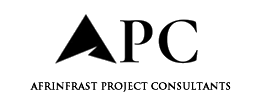
Lee Ryan, from Design and Build UK, discusses why collaborations such as Women in Construction: The Power Within HER are vital for equality in construction
While the United States begins dismantling diversity initiatives across public institutions and corporate sectors, the UK construction industry is taking a bold step in the opposite direction.
Rather than shrinking its ambitions, the sector is choosing to widen the talent pool, expand leadership capabilities, and rethink how it supports the people who build our nation’s infrastructure. At the heart of this shift is a new focus on inclusive leadership and a determination to retain the women who are too often lost just as they reach the height of their potential.
Equality in construction and the skills shortage
The UK construction sector is in the grip of a national skills shortage. As experienced workers retire and demand for new infrastructure increases, the industry faces the challenge of attracting and retaining skilled talent in a highly competitive labour market. This is not simply a recruitment issue. It is a leadership issue, rooted in how the industry supports its workforce, builds career pathways, and promotes environments where everyone can succeed.
Despite gradual improvements, women still make up less than 16% of the UK construction workforce. Representation in senior, technical, and site-based roles is even lower. More concerning is the steady loss of women in their late 30s and early 40s. This is a stage in their careers when their knowledge, networks, and leadership potential should be most valuable. Many leave not because they lack ambition or ability, but because the system does not support them. Poor workplace flexibility, outdated leadership structures, limited progression opportunities, and a lack of inclusive culture continue to create insurmountable roadblocks.
It is in this context that the Women in Construction: The Power Within HER initiative was born. Designed to address these systemic issues head-on, the programme offers practical, fully funded training and leadership development opportunities to ensure women not only enter the industry but thrive in it.
Training to improve equality
At the centre of this effort is the ‘Leading with Motivational Intelligence Executive Diploma’, an accredited course developed in partnership with The Power Within Training and the Scottish Qualifications Authority. This programme provides construction leaders, managers, and rising professionals with the tools and skills to lead more effectively, more inclusively, and with a clear focus on people. It is already being used by some of the UK’s most forward-thinking contractors and SMEs to enhance team performance and create workplace cultures that retain top talent.
The course is designed to be practical, accessible, and deeply transformative. It is not a tick-box exercise in compliance. Rather, it is a rigorous programme that addresses real-world challenges such as high staff turnover, siloed working, low morale, and resistance to change. The curriculum explores a range of leadership themes, including creating high-trust team cultures, coaching for performance, and navigating uncertainty and transition. Participants engage in live Zoom sessions, complete modular online content, and benefit from round-the-clock access to expert mentoring. The course structure ensures that leaders can learn at their own pace, apply lessons in real time, and receive immediate feedback and support.
At its core, the programme challenges traditional notions of leadership in the construction industry. It encourages managers to move away from rigid command-and-control styles and adopt a more empowering, motivational approach. This shift is not only necessary but also urgent. Studies show that construction professionals are increasingly disengaged, with more than half reporting they do not feel they are doing their best work. This is not a reflection of their capabilities. It reflects the environments in which they operate. Leadership that fails to listen, include, and inspire undermines productivity, innovation, and morale.
Alongside leadership development, Women in Construction: The Power Within HER offers a comprehensive training programme for women looking to start or advance careers in construction. This multi-week initiative offers a comprehensive journey, from foundational training to employment support and mentorship. Participants begin with a confidence-building module that includes leadership training, resilience coaching, and essential Health, Safety and Environment education. This is followed by forty hours of online technical training, covering tools, equipment use, safety procedures, and basic site operations.
The second phase involves on-site training, providing women with the opportunity to apply what they have learned in a real-world construction environment. Here, they gain not only hands-on experience but also an understanding of workplace dynamics, site expectations, and the rhythm of a typical working day. The final stage of the programme offers employability support, including CV workshops, LinkedIn profile guidance, and interview preparation. This ensures participants are ready to transition directly into employment. Even after completion, women receive six months of ongoing mentorship, access to networking opportunities, and the support of a growing professional community.
This initiative is open to women across England, Scotland, and Wales and is designed to be as inclusive and supportive as possible. It welcomes women from all backgrounds, whether they are returning to work after a career break, seeking to change industries, or entering the workforce for the first time. The diversity of participants has become one of the programme’s greatest strengths, bringing a wide range of experiences, perspectives, and motivations into the construction sector.
The importance of leadership
However, the programme does not just support individuals. It supports businesses too. Employers who partner with Women in Construction: The Power Within HER gain access to a skilled and motivated talent pipeline that is site-ready and supported. They also receive guidance on how to create inclusive work environments that enable women to succeed and progress. The initiative serves as a bridge, connecting businesses that want to improve with the practical tools and support needed to make it happen.
This dual focus on leadership and workforce development is what makes the initiative unique. It recognises that solving the industry’s diversity challenge requires action at both ends of the pipeline. It is not enough to bring women into construction. We must also change the conditions that have historically pushed them out. That means investing in managers, changing organisational cultures, and creating career pathways that are transparent, flexible, and fair.
If the UK construction industry is serious about closing its talent gap, it must reframe inclusion not as a moral obligation, but as a business imperative. Diversity is good for innovation, good for teamwork, and good for the bottom line. Inclusive teams make better decisions, adapt to change more quickly, and deliver stronger results. Clients increasingly expect to see diversity in the supply chain, and companies that can demonstrate this are better positioned to win contracts and build their reputations.
A better future, together
The construction industry is at a crossroads. The challenges are real, but so are the opportunities. At a time when other countries are pulling back from inclusion, the UK can choose a different path. It can build forward not only by investing in infrastructure, but also by investing in people. Women in Construction: The Power Within HER offers a roadmap for that future. It is a blueprint for a sector that values experience, champions diverse leadership, and ensures that no one is left behind simply because they do not fit the traditional mould. Now is the time to lead differently. Now is the time to make construction a place where everyone can build a career and a future that lasts.
While training programmes like Women in Construction: The Power Within HER are critical to increasing participation and retention, they cannot operate in isolation. For gender equality to become a reality across the construction sector, the industry must undergo broader cultural and operational transformation.
Changes we can all make
One of the most impactful changes companies can make is to normalise flexible working arrangements across all roles, including those based on site. Flexibility should not be viewed as a concession or special treatment. It should be a standard part of modern employment. Whether through job sharing, adaptable shift patterns, remote coordination, or compressed hours, offering flexibility creates a more inclusive environment. This benefits not only women, but all workers. It is particularly important for those balancing work with caregiving responsibilities, as it can significantly reduce the number of talented professionals lost mid-career.
Worksite environments themselves must also evolve to become more welcoming and inclusive. This includes the physical setup, such as ensuring there are adequate welfare facilities for women, and that personal protective equipment is available in a full range of sizes. Cultural improvements are equally vital. Zero-tolerance policies for harassment and discrimination should be the norm. These must be backed by training, clear reporting channels, and strong, visible leadership commitment. When people feel safe, respected, and supported at work, they are more likely to perform at their best and remain in the industry.
Transparency in career progression is another area that requires urgent attention. Many women report that advancement in construction still relies too heavily on informal networks or unwritten rules. Employers must take steps to create clear, structured career pathways with visible opportunities for promotion, fair access to training, and merit-based progression. Mentorship and sponsorship programmes can also be powerful tools for helping women navigate their careers and access leadership roles.
Representation and language also play a significant role in shaping perceptions. The industry must be intentional in how it communicates. Recruitment materials, job descriptions, and public campaigns should use inclusive, gender-neutral language. Just as importantly, women working in technical, site-based, and leadership positions should be highlighted across media and internal communications to reinforce the message that they belong in every part of the sector. Visibility not only inspires others to follow but also challenges long-held stereotypes about who construction is for.
The pipeline of talent can also be strengthened by engaging with girls and young women long before they reach the workforce. Early intervention through school partnerships, outreach events, apprenticeships, and hands-on exposure to construction careers can significantly shift perceptions and expand the pool of future professionals. Having female role models lead these efforts sends a powerful message and helps dismantle the idea that construction is a male-only domain.
Finally, progress must be measured. Companies that commit to collecting and analysing data on gender representation, pay equity, retention, and promotion rates are better equipped to understand where barriers exist and how to remove them. Accountability at the leadership level is essential. Gender equality should not be a side project or an optional initiative. It must be integrated into business strategy and tied to key performance indicators for senior decision-makers.
Improving gender equality in construction is not only the right thing to do. It is also a smart and strategic choice for an industry that relies on collaboration, creativity, and resilience. Real change comes when programmes like Women in Construction: The Power Within HER are supported by a sector-wide commitment to equity at every stage of the employment journey.
The post How inclusive leadership can solve construction’s skills crisis appeared first on Planning, Building & Construction Today.

